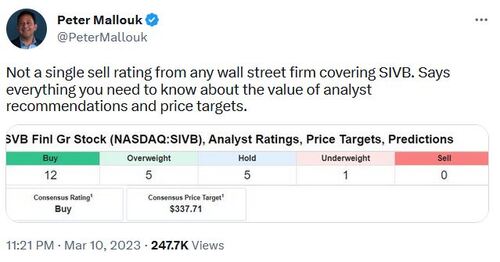Silicon Valley Bank's Losses are LendingClub's Gains
On 9 February 2023, Forbes posted its annual Forbes Financial All-Stars list, followed on 14 February by its America's Best Banks list. One of the institutions that appeared on both lists was SVB Financial Group, the holding company for Silicon Valley Bank. At the time, the company held more than $200 billion in assets as well as another $175 in bank deposits, and enjoyed overwhelmingly positive ratings from Wall Street analysts.
Yet within a month, examiners from the United States Federal Reserve and the Federal Deposit Insurance Corporation (FDIC) would arrive at SVB's headquarters in Santa Clara, California, to assess the bank's books, seize control of its assets, and shutter its doors. The shocking collapse of SVB would mark the second largest bank failure in American history.

P2PIncome covered the collapse of SVB in early March, and discussed its implications for the peer-to-peer lending market. At the time, we mentioned that former p2p platform LendingClub faced minor exposure ($21 million) due to the collapse, but that it was not "material to the Company's liquidity position." It turns out the company's attorneys were telling the truth. LendingClub not only survived the exposure, it increased its deposits by over $800 million, as consumers sought out more stable banking options.
LendingClub

When P2PIncome first started covering LendingClub, it still operated as a peer-to-peer lending platform for personal loans, bridge loans, and small business loans. It was one of the first American platforms of its kind, and seemed to by doing well till the 2016 dip started affecting business. Then a series of booking discrepancies led to an SEC investigation, which turned off a lot of investors. Add to that the effects of Covid, and by the end of 2020, they had announced that "under a prospective banking framework, it is not economically practical" from them to continue their p2p operations. Instead, they converted their platform into a standard online bank offering consumer-banking services.

Since becoming a standard online bank, LendingClub has elevated its game. The company now has a market cap of approximately $800 million, and posted over $1.2 billion in revenue by the end of 2022. They've managed to attract a large user base, and in 2022 their net profit margin skyrocketed to over 900%. In hindsight, we can say they're decision to drop p2p-loan investments paid off.

Market Type
Consumer Loans
Average Returns
6 - 36%
Minimum Investment
USD 1,000
Signup Bonus
USD 25
Registered users
4.7 Million
Total funds invested
USD 85 Billion
Default rate
10%
Regulating entity
U.S. Securities and Exchange Commission
Buyback guarantee
Secondary market
Payment methods
Bank Transfer
Withdrawal methods
Bank Transfer
Lending Club is one of the oldest P2P lending platforms in the world. They are solely based in the USA. They are audited, publicly traded and fully compliant with SEC regulations.
